
Acanthaceae is a family of dicotyledonous flowering plants containing almost 250 genera and about 2500 species. Most are tropical herbs, shrubs, or twining vines; some are epiphytes. Only a few species are distributed in temperate regions. The four main centres of distribution are Indonesia and Malaysia, Africa, Brazil, and Central America. Representatives of the family can be found in nearly every habitat, including dense or open forests, scrublands, wet fields and valleys, sea coast and marine areas, swamps, and mangrove forests.
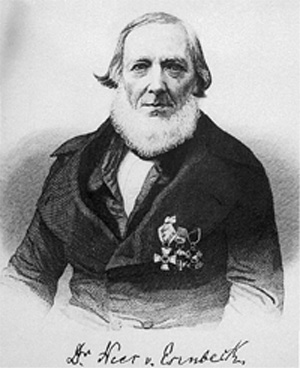
Christian Gottfried Daniel Nees von Esenbeck was a prolific German botanist, physician, zoologist, and natural philosopher. He was a contemporary of Goethe and was born within the lifetime of Linnaeus. He described approximately 7,000 plant species. His last official act as president of the German Academy of Natural Scientists Leopoldina was to admit Charles Darwin as a member. He was the author of numerous monographs on botany and zoology. His best-known works deal with fungi.

Ferdinand Julius Cohn was a German-Polish biologist. He is one of the founders of modern bacteriology and microbiology.

Marchantiales is an order of thallose liverworts that includes species like Marchantia polymorpha, a widespread plant often found beside rivers, and Lunularia cruciata, a common and often troublesome weed in moist, temperate gardens and greenhouses.
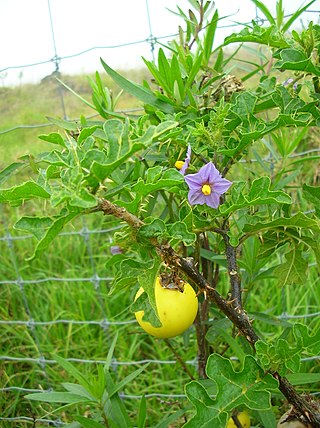
Solanum linnaeanum is a nightshade species known as devil's apple and, in some places where it is introduced, apple of Sodom. The latter name is also used for other nightshades and entirely different plants elsewhere, in particular the poisonous milkweed Calotropis procera.

Ruellia is a genus of flowering plants commonly known as ruellias or wild petunias. They are not closely related to petunias (Petunia) although both genera belong to the same euasterid clade. The genus was named in honor of Jean Ruelle (1474–1537), herbalist and physician to Francis I of France and translator of several works of Dioscorides.
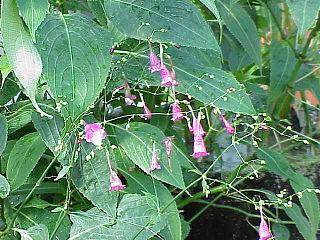
Peristrophe was a genus of up to 40 species of flowering plants: that are now usually considered synonyms in the genus Dicliptera Juss.

Blepharis is a genus of plant in family Acanthaceae. It contains around 126 species found in seasonally dry to arid habitats from Africa over Arabia to Southeast Asia. In section Acanthodium, there are 13–15 species that use the C4 carbon fixation pathway. Phylogenetic analysis suggests that this pathway evolved up to three times independently in the genus over the last five million years.

Christian Friedrich Hornschuch was a German botanist.

Ehretia acuminata is a deciduous tree found in Japan, China, Bhutan, Nepal, Laos, Vietnam, New Guinea and Australia. Fossil evidence suggests an ancient Laurasian origin. This group of plants spread to Australia and South America via Africa, when these continents were still joined.
Chaetobromus is a genus of African plants in the grass family.
Cephalopappus is a genus of flowering plants in the family Asteraceae.
Berghesia is a monospecific genus of flowering plants in the family Rubiaceae. It was described by Christian Gottfried Daniel Nees von Esenbeck in 1847. The genus contains only one species, viz. Berghesia coccinea, which is endemic to Mexico.
Hypodiscus is a group of plants in the Restionaceae named by Christian Gottfried Daniel Nees von Esenbeck and described as a genus in 1836.

Rhodocoma is a group of plants in the Restionaceae described as a genus in 1836. The entire genus is endemic to South Africa (Cape Province and KwaZulu-Natal.
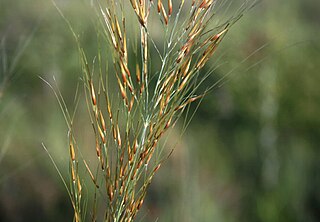
Loudetia simplex is a grass species found in tropical and Southern Africa and Madagascar. It was originally described as a Tristachya species by Christian Gottfried Daniel Nees von Esenbeck in 1841 and was transferred to Loudetia by Charles Edward Hubbard in 1934.
Plantae preissianae sive enumeratio plantarum quas in australasia occidentali et meridionali-occidentali annis 1838-1841 collegit Ludovicus Preiss, more commonly known as Plantae preissianae, is a book written by Johann Georg Christian Lehmann and Ludwig Preiss.
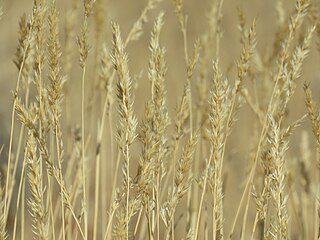
Centropodia glauca, also known as ghagras or ikagras is a species of grass native to Botswana, Namibia, South Africa, and Kenya. The occurrence of this grass is proof of well-preserved sandveld. The grass is very hardy and can thrive in dry veld. It is a perennial pole grass that usually grows between 200–850mm but can grow up to 1m tall. The flowering period is between September and May. Because ghagras have few leaves and the stalks are almost always green, it is resistant to fire.
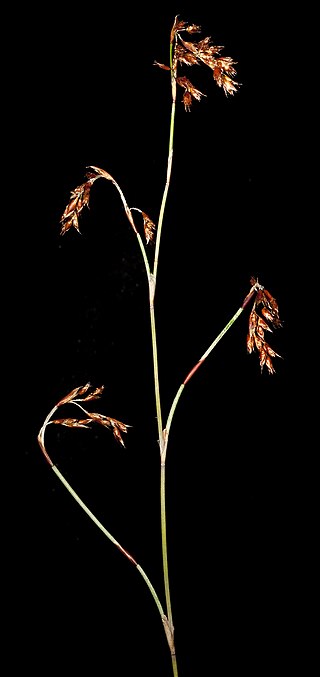
Leptocarpus coangustatus is a species of plant in the Restionaceae (rush) family, endemic to Western Australia.














